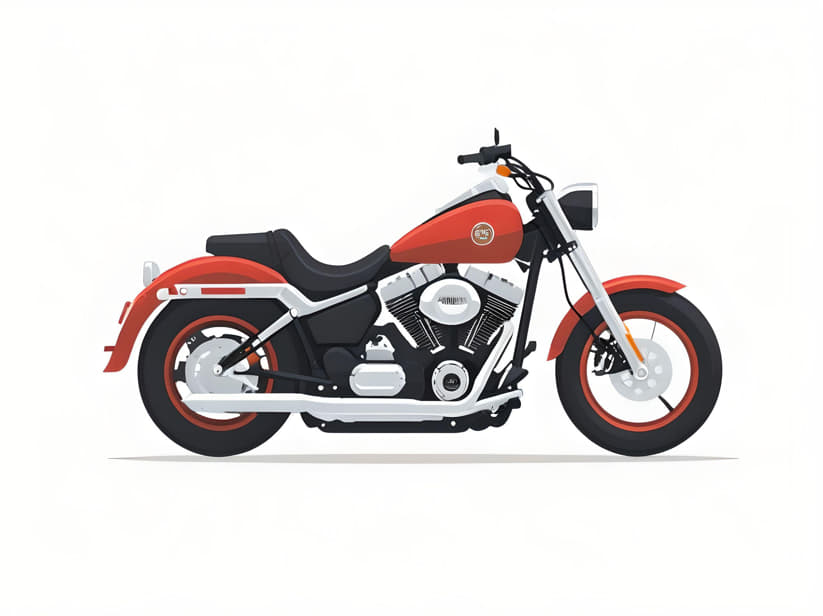Harley-Davidson motorcycles are iconic machines known for their distinctive design, robust engineering, and unparalleled riding experience. One critical component that contributes to the smooth performance of a Harley-Davidson is the compensator. While many riders may not be familiar with this term, the compensator plays a vital role in the overall functionality and durability of the motorcycle.
Understanding the Compensator

A compensator is a component located in the primary drive system of a Harley-Davidson motorcycle. Specifically, it is mounted on the crankshaft and works in conjunction with the primary chain, clutch, and transmission. The primary drive system transmits power from the engine to the transmission, and the compensator’s role is to smooth out the power delivery.
Function of the Compensator
The primary function of the compensator is to absorb and dampen the shock and vibration generated by the engine. Harley-Davidson engines, known for their V-twin design, produce significant torque and power pulses. These power pulses can create substantial vibration and shock loads that, if not managed properly, can lead to wear and tear on the drivetrain components.
The compensator acts as a shock absorber, taking the brunt of these power pulses and smoothing out the power delivery. It consists of a series of springs and ramps that compress and expand in response to the engine’s power pulses. This action helps to reduce the stress on the primary chain and other components, leading to a smoother and more comfortable ride.
Importance of the Compensator
The compensator is crucial for several reasons:
- Smooth Power Delivery: By dampening the engine’s power pulses, the compensator ensures a smoother transfer of power to the transmission. This results in a more comfortable and enjoyable riding experience.
- Reduction of Wear and Tear: By absorbing the shock and vibrations, the compensator reduces the stress on the primary chain, clutch, and other drivetrain components. This helps to extend the lifespan of these parts and reduces the need for frequent maintenance and repairs.
- Improved Handling and Stability: A smooth power delivery enhances the motorcycle’s handling and stability, making it easier to control, especially at lower speeds or during acceleration and deceleration.
Common Issues with Compensators
Despite their importance, compensators can develop issues over time. Some common problems include:
- Wear and Tear: Like any mechanical component, compensators can wear out due to prolonged use. The springs and ramps inside the compensator can become worn or damaged, leading to reduced effectiveness in dampening vibrations.
- Noise: A failing compensator can produce a distinctive knocking or clunking noise, especially during acceleration or deceleration. This noise is often a sign that the compensator’s internal components are worn and need replacement.
- Vibration: If the compensator is not functioning correctly, riders may notice increased vibration and harshness in the drivetrain. This can affect the overall riding experience and lead to discomfort during long rides.
- Slippage: In some cases, a failing compensator can cause the primary chain to slip, leading to a loss of power transmission. This can result in poor performance and difficulty in maintaining consistent speed.
Maintenance and Replacement
Regular maintenance of the primary drive system, including the compensator, is essential to ensure the longevity and reliability of a Harley-Davidson motorcycle. Riders should follow the manufacturer’s recommended service intervals and inspect the compensator for signs of wear or damage.
If issues with the compensator are detected, it is important to address them promptly. Replacing a worn or damaged compensator can restore smooth power delivery and prevent further damage to the drivetrain components. While replacing a compensator can be a complex task requiring specialized tools and knowledge, many Harley-Davidson dealerships and specialized motorcycle repair shops can perform this service.
Upgraded Compensators
For riders looking to enhance the performance and durability of their Harley-Davidson motorcycles, aftermarket compensators are available. These upgraded compensators often feature improved materials and designs that offer better damping performance and longer lifespan compared to the stock components.
The compensator on a Harley-Davidson motorcycle is a critical component that plays a significant role in ensuring smooth power delivery and reducing wear and tear on the drivetrain. By absorbing the engine’s power pulses, the compensator enhances the riding experience, improves handling and stability, and extends the lifespan of other primary drive components. Regular maintenance and timely replacement of a worn compensator are essential to keep a Harley-Davidson running smoothly and reliably. For those seeking even greater performance, aftermarket compensators offer a viable upgrade option. Understanding the function and importance of the compensator can help riders appreciate the engineering that goes into creating the iconic Harley-Davidson riding experience.